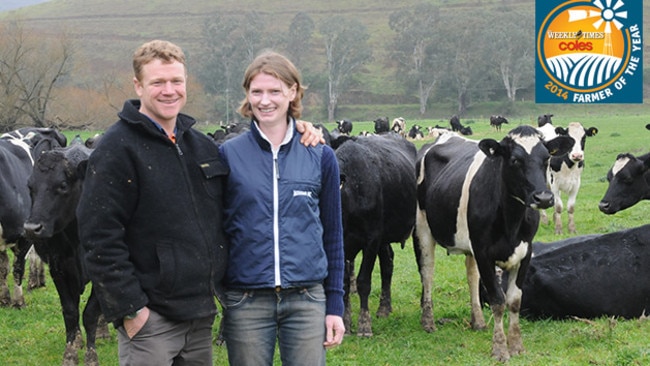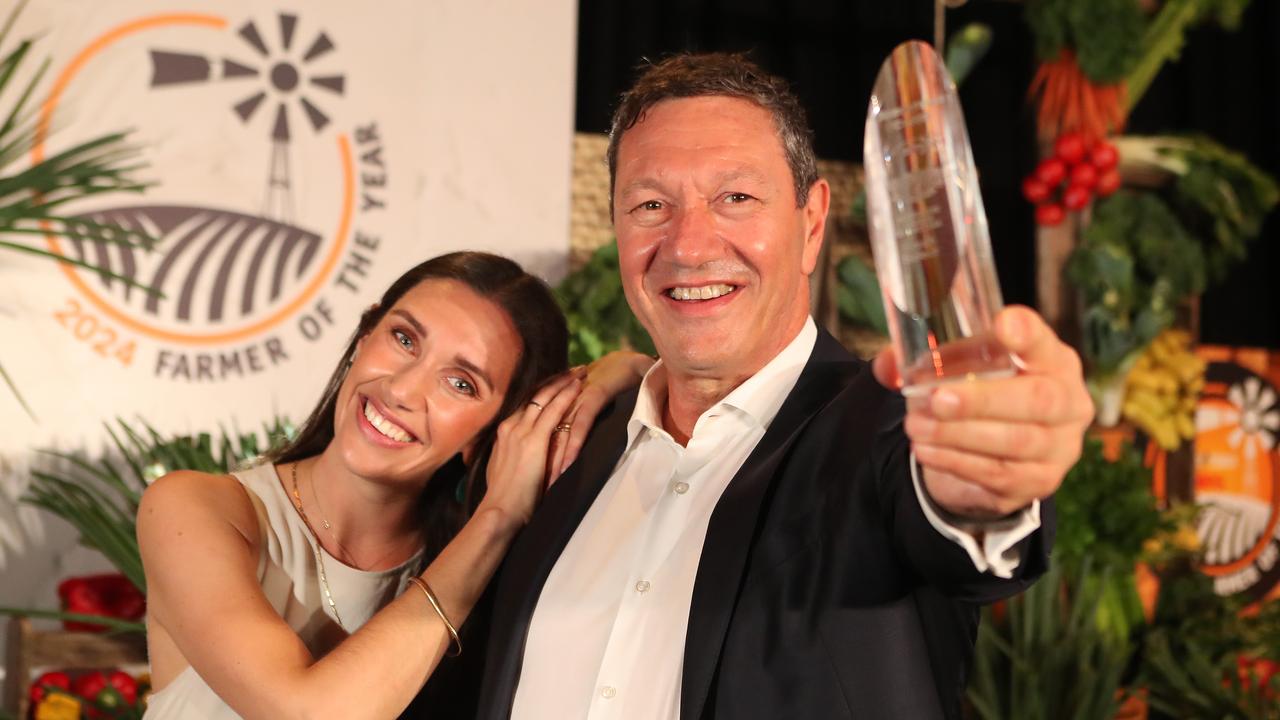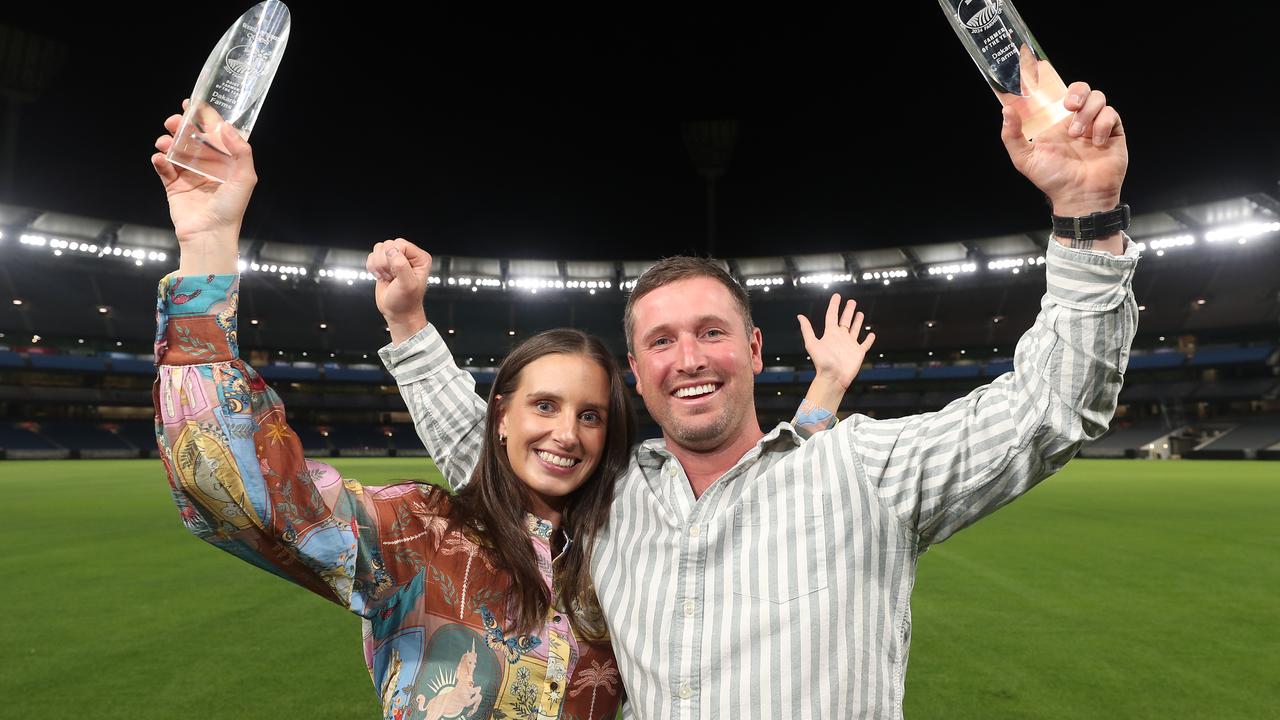Mitta Mitta Valley dairy farmers Justin and Alice Colclough take a step in the right direction
NORTH East farmers Justin and Alice Colclough are taking their first steps on their dairying journey.

NORTH East farmers Justin and Alice Colclough are taking the first steps on their dairying journey.
For the young couple with less than a year of farming under their belts, they sometimes feel like they can’t see the destination.
But already locals are noticing the changes they are making as they take over the running of Alice’s family farm in the Mitta Mitta Valley from her parents, Matt and Kate O’Brien.
The couple had been living in Melbourne — Justin was working in logistics and Alice in banking — and had discussed returning to the farm. But it was Justin who was the real instigator in the decision.
Frustrated by city life and the time pressures of employment, he wanted his young family to grow up in a farm environment as he had near Deniliquin in the NSW Riverina.
But it was a big leap to move from limited experience as a child living on a farm at Deniliquin to running a dairy farm.
Justin is not the type of person to be daunted, though, and he sees the challenges in taking his in-laws dairy farm to a new level as exciting.
“I just want to put my head down and do it,” Justin said.
“We have a list of what we’d like to achieve and it basically falls into three areas: improving pastures, improving tracks and improving genetics. If we do all these right, greater profitability should follow.”
In some ways, it’s like history repeating on the farm, which fronts the Mitta Mitta River but runs up into hilly and stony country.
Alice’s parents were relative newcomers to dairying in 1996 when they switched the focus of the farm from beef and sheep.
They, too, had to learn how to run a dairy farm and milk a herd of cows but felt it was the best way of earning a return on the 400ha farm.
The next generation is now taking that initial farm to the next level.
Justin’s first priority is improving the pastures on the farm, which had decreased in quality and quantity in recent years.
“There’s a lot of land which can be improved and pastures improved,” he said.
“Basically we want to be able to provide the cheapest source of feed available to our cows and that’s grass.”
There are pros and cons about the farm, and the couple are well aware of those.
On the plus side, there are rich soils — especially on the river flats — and an extra leased area has increased the amount of country that can be irrigated and will be used to grow summer forage crops such as brassicas. The pluses are topped by a 1100mm rainfall that is very reliable.
But the Colcloughs must also deal with the remainder of the farm, which is hilly and some distance from the 16-a-side swingover dairy where the cows are milked.
“The farm layout is certainly not ideal,” Justin said.
“We can grow grass, though, with the good rainfall, and a lot of it if we get the quality right. We want to run a low-cost operation and grass and silage is the way to do it.”
The Colcloughs are milking about 90 cows but will be milking more than 200 in spring.
They have switched from a spring-calving herd only to a split calving, and that in itself has raised another challenge, which they intend to tackle head on.
Some of the cows are going lame after ploughing long distances in the mud which Alice said had not been an issue when the cows were not being milked through the winter, as they were dried off and in the hill country.
Rather than be put off from a split calving, the couple have decided to step up plans for better tracks, which should be in place for next winter.
The third area they intend to work on is genetics.
Justin said there were cows in the herd that were still producing and earning but probably wouldn’t remain. Selection pressure, as the Colcloughs strive to improve milk production, will mean only the top performers are retained.
“The herd averaged 5600 litres in 2011-12 and we will establish our own production goals down the track,” Justin said.
“As we work on things like pastures and better tracks and genetics, this will start to be evident in our production.”
What Justin and Alice particularly like is how they get almost instantaneous feedback on their decisions.
If the cows “like” what they have done, it is shown in more milk in the vat. Poor decisions also are shown in that way.
“I think the main thing we will concentrate on is to grow good grass and grow lots of it,” Justin said.
“We don’t have enough now and it hurts and makes management harder.”
Justin and Alice said the surprising but very welcome side of the dairy industry was the peer support they received, from professional staff such as agronomists right through to fellow farmers sharing experience and knowledge at focus group meetings.
And they also paid tribute to their herd managers, Phil and Melissa Gregory, who Justin said gave him a crash course in milking cows.
“People could look at our business and wonder about staffing levels, but we have experienced and good cow managers who know the herd,” Justin said.
“If we didn’t have them, there would be no time to do a lot of other jobs like fencing or pasture maintenance. We are at the pointy end of development and we need the amount of labour we have to get the work done.”


